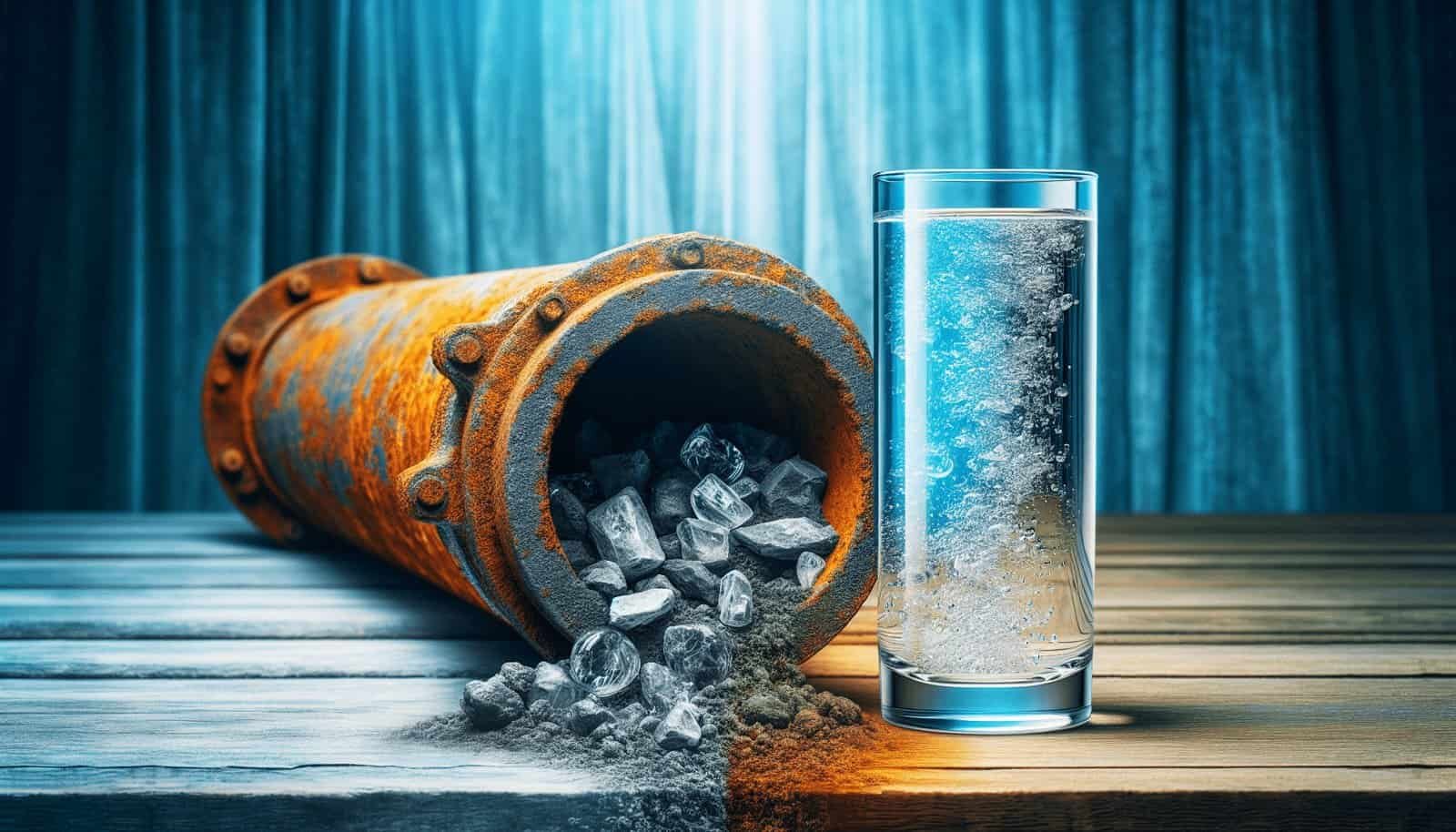Have you ever wondered what to do if your well water contains high levels of iron? If you’re dealing with this issue, you’re not alone. Many well owners face the challenge of managing iron in their water supply. Iron may not pose significant health risks, but it can certainly create numerous practical and aesthetic concerns. It can stain your laundry and fixtures, create clogs, and even change the taste of your drinking water.
Understanding Iron in Well Water
Before you work on addressing the high iron content, it’s essential to understand why iron is present in your well water. Iron naturally occurs in the earth’s crust and often finds its way into groundwater supplies. Well water primarily gains its iron content through the water dissolving iron-bearing minerals as it moves through soil and rock layers.
Types of Iron in Well Water
Iron in well water typically exists in three primary forms, each presenting unique challenges:
Ferrous Iron (Clear-Water Iron): This type is dissolved in water and appears clear initially but oxidizes and turns reddish-brown when exposed to air.
Ferric Iron (Red-Water Iron): This form is already oxidized and may look like rust particles suspended in the water.
Organic Iron: Often bound with organic materials in the water, making it harder to remove.
Understanding which type of iron is present in your well water can help determine the best treatment method.
Identifying the Problem
Before mitigating the iron issue, confirm the presence and concentration of iron in your well water. Testing your water is the first crucial step.
Testing Your Well Water
Routine testing should be part of owning a well, but if you suspect high iron levels, have your water tested specifically for:
- Iron concentration
- pH level
- Water hardness
- Presence of other contaminants
Many local health departments or certified laboratories offer testing services. The results will guide you on the severity of the iron problem and help you choose an appropriate treatment method.

Impacts of High Iron Levels
While iron itself is not harmful at low levels, high concentrations can have negative consequences.
Aesthetic Issues
- Staining: Iron can leave unsightly rust stains on clothing, plumbing fixtures, and appliances.
- Taste and Color: High iron can give water a metallic taste and cause it to appear yellow, brown, or red, making it unappealing for drinking and cooking.
Functional Concerns
- Clogged Pipes and Appliances: Iron can accumulate in pipes and appliances, leading to clogs and decreased efficiency.
- Bacterial Growth: Iron bacteria, feeding on iron, can create slimy biofilms inside pipes, causing additional clogging and unpleasant odors.
Treatment Options for High Iron Content
There are several methods to reduce or eliminate iron from well water. The right choice depends on the iron type, concentration, and water usage.
Oxidation and Filtration
This method is effective for both clear-water and red-water iron. Involves adding an oxidizing agent (like chlorine or potassium permanganate) to convert soluble iron into particles, which are then filtered out.
Pros: Suitable for moderate to high levels of ferrous and ferric iron
Cons: May require a retention tank and regular addition of chemicals
Ion Exchange Water Softener
Typically used for water softening, ion exchangers are effective for reducing low levels of ferrous iron.
Pros: Can handle both iron and hardness issues simultaneously
Cons: Less effective with high iron concentrations and may require frequent resin regeneration
Manganese Greensand Filter
Manganese greensand filters use a special coating to oxidize and filter out iron.
Pros: Effective for high iron concentrations and manganese
Cons: Requires regular maintenance and potassium permanganate supplements
Catalytic Carbon or Birm Filter
These filters use a media that catalytically oxidizes and filters ferrous iron.
Pros: No need for chemicals if the water has enough dissolved oxygen
Cons: Not suitable for water with low oxygen levels or organic iron
Aeration
Aeration involves introducing air into the water, allowing iron to oxidize and precipitate for filtration.
Pros: Chemical-free and can handle high iron levels
Cons: Requires proper ventilation and maintenance

Maintenance and Monitoring
Installing a filtration system is not the end of the process. Regular maintenance and monitoring are essential to ensure the continued effectiveness of the treatment system.
Regular Maintenance
For any treatment system, follow the manufacturer’s guidelines for cleaning, regenerating, or replacing media and parts.
Periodic Testing
Continue to test your water every few months to monitor iron levels and assess the system’s performance. Water chemistry might change, requiring you to adjust treatment strategies.
Preventative Measures
To reduce iron levels effectively, consider implementing preventative measures.
Well Inspection and Maintenance
Schedule regular inspections of your well to ensure it remains in a sealed and sanitary condition. Identify sources of contamination early.
Natural Filtration
Implement landscaping practices that naturally filter rainwater before it reaches your well. Use plants and materials that absorb excess iron and other contaminants.
Well Location and Structure
Verify that your well is appropriately located and constructed. Avoid placing a well near sources of contamination like industrial areas or large bodies of stagnant water.

Addressing Iron Bacteria
Iron bacteria can thrive in iron-rich water and should be properly managed.
Detection and Prevention
Identify the presence of iron bacteria by checking for slimy reddish-brown deposits in the water. To prevent and control their growth, periodically disinfect your well and plumbing with chlorine.
Treatment
For persistent bacterial issues, consult with a water treatment professional. Solutions might include installing a chlorination system or alternative treatments specifically designed to eliminate iron bacteria.
Conclusion
Understanding the types and impacts of iron in well water lays the groundwork for effective treatment and prevention. Regular water testing, selecting the right treatment method, and conducting ongoing maintenance are key to ensuring that your well water remains clean, clear, and safe for use. By taking these steps, you not only address the current iron issue but also protect your family’s water supply for the future.

